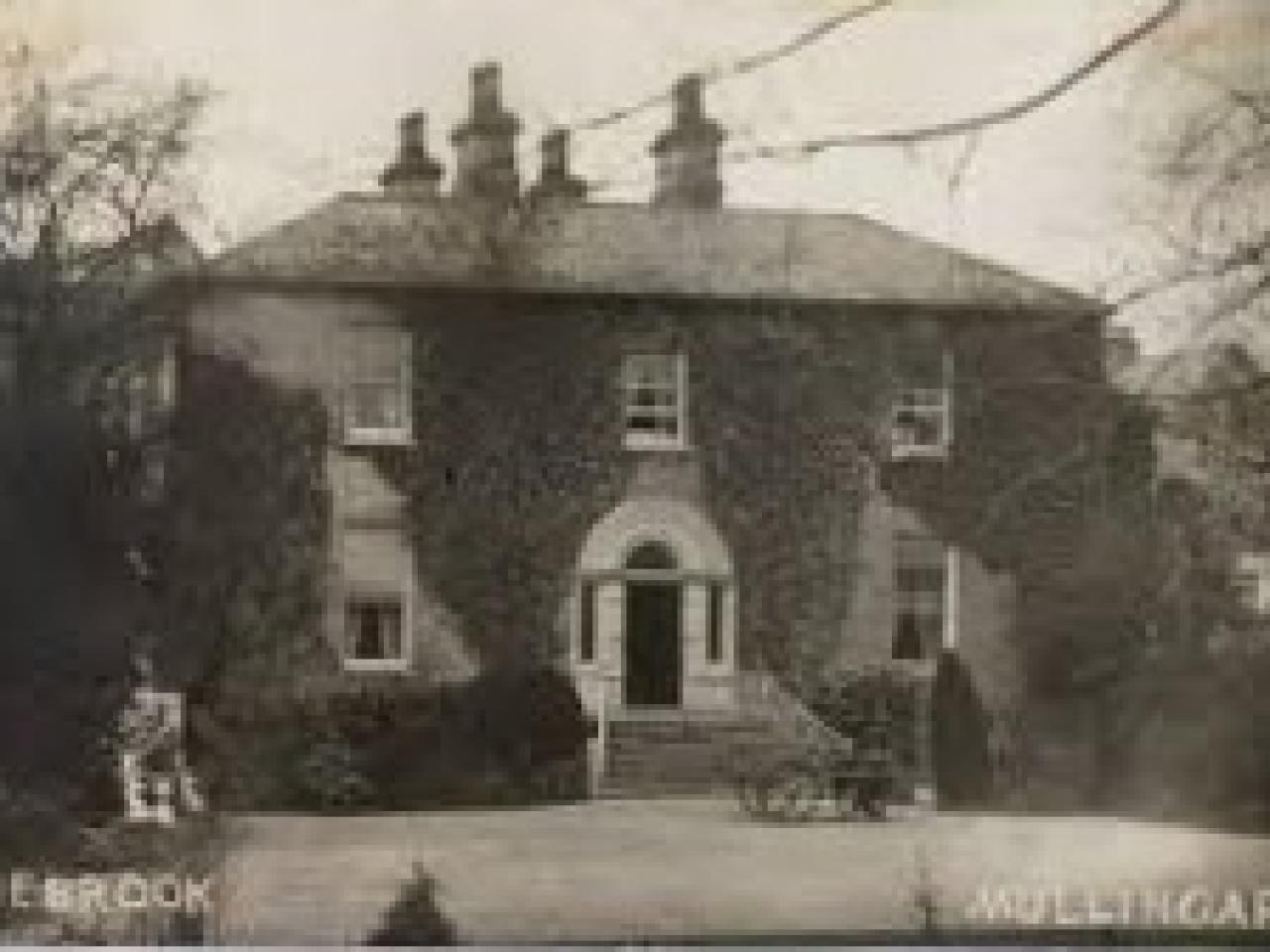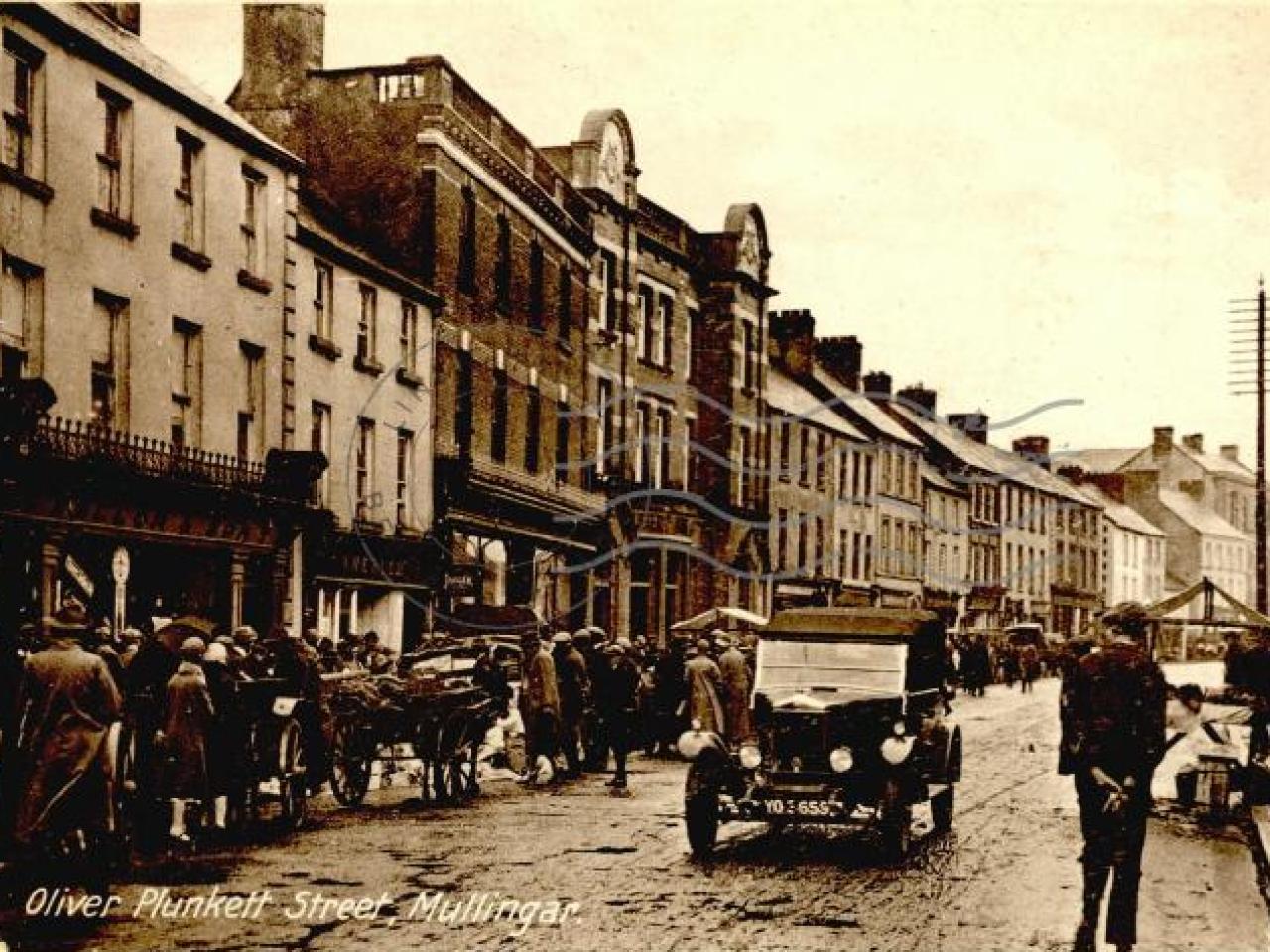History of Annebrook House Hotel
The family run Annebrook House Hotel Mullingar opened it's doors in 2007. Originally an Old Georgian residence for the local county surgeon, the historic Annebrook House Hotel was purchased by the Dunne family in 2005. With his experience in hospitality and construction Berty Dunne set about creating a hotel as unique as the man who owns it. The Annebrooks central location, its diverse range of luxury accommodation from 2 bedroomed family suites to executive doubles has made it a very popular location for those coming to experience all that the midlands has to offer.
History of Annebrook House
Built on the River Brosna and encircled by the Royal Canal, Mullingar is a thriving commercial centre. The town takes its name from the Gaelic “An Muileann gCearr” meaning the left hand mill and is associated with a miracle that occurred at the mill.
During the seventeenth century, the Cromwellian Land Settlement dispossessed many of the old English landowning families of the area and they were replaced by new English and Scottish settlers. Mullingar families were among the thousands of Irish Roman Catholics who emigrated to mainland Europe. In 1661, the Manor of Mullingar was granted to Sir Arthur Forbes, Earl of Granard, whose family would own the town for 200 years. In 1690, the Williamite army occupied Mullingar and stockpiled it with weapons and provisions for the campaign against the Jacobites.
The Edgeworth Suite
Maria Edgeworth was born on January 1st 1767. She was the third child of Richard Lovell Edgeworth by his first wife and as he was married four times (due to the untimely death of his other wives), she had many siblings, which she helped to educate. She had a very enthusiastic spirit and loved education and he would have enlisted her helping in this task. Together they would have developed an ideal system for this purpose.
In 1782 the family lived in Edgeworthstown, Co. Longford, only 25 kilometres west of Mullingar where Maria Edgeworth began to write children’s stories as well as novels and other works. Her most famous novel was Castle Rackrent, which was published in 1800 and is a story which describes the decline of the Rackrent Family down through the ages, through several generations and provides an excellent social commentary on the landlord system of the time. Other novels include Ennui (1809), The Absentee 1812, and these works also gives us an insight into how the irresponsibility of some of the landed gentry as landlords had an appalling effect on poor Irish tenants.
Maria Edgeworth had a huge social conscience and even though her own writings were prolific (her collected works amounting to approximately 20 volumes) she worked relentlessly during the Great Famine (1845 – 1847) to come to the aid of the poor in her own area. She died 2 years after the Famine ended on May 22nd 1849.
Maria Edgeworth is reputed to have stayed in the Annebrook House in the early 1800’s and is supposed to have earned her initials on one of the walls.
The O’Connell Suite
Annebrook House was built by the Westmeath Board of Guardians as a residence for the County Surgeon circa 1810. It was an imposing Georgian style building with extensive gardens with the River Brosna winding its way through the grounds. Mr. J.A O’Connell (E.R.C.S.I) was appointed County Surgeon in the 1950’s and came to live at Annebrook with his wife Olive and their children. Mrs. O’Connell who was a native of Co. Sligo was herself a medical doctor. The O’Connell Family were devoted to Annebrook and maintained it in elegant fashion. Mrs. O’Connell was gifted at floral art and used the flowers and shrubs from her own garden as a basis for her arrangements. The O’Connell’s loved stimulating intellectual conversation and literature, travel, religion and education were favourite topics. Many charity functions were held at Annebrook. The O’Connell’s were the last family to reside here.
The Barlow Room
The earliest known physicians to have resided in Annebrook were Doctors Robert and Ed Barlow as documented by Thomas Conlon in his journal “The Sunny Side of Old Westmeath” in 1949. The two Dr Barlow’s are listed in pigots commercial diary of the year 1824 as being prominent physicians in residence in Annebrook. Also it is interesting to note that in 1850’s; Robert’s daughter Frances Elizabeth Barlow married her next door neighbour the Rev Thomas Woodward who was rector of All Saints Church next to Annebrook. As written by the late Dr Trevor Winkworth in his “History of All Saints Church”.
The Water Mill
Research on Annebrook estate has on more than one occasion made a reference to a small water mill inside its boundaries inside the river Brosna. Again, I quote, Thomas Conlon’s “ The Sunny side of Mullingar” in which he journalled on August 19th 1950.
Mullingar
“The land in that area including the Annebrook estate was previous to the suppression of the monasteries by Henry VIII in 1540, part of the property belonging to the Canon Regular of St. Augustine whose church and Priory building stood on the site now occupied by All Saints Church. There were 2 acres of gardens outside the east gate of the priory of St. Mary and a small water mill on the Brosna, in the area where Annebrook House stands”. On October 10th 1540 this same water mill was valued at 40 shillings which would be the equivalent of two euros and fifty cent in today’s prices.

Motorists in Westmeath 1905
The earliest Motor Directory of Westmeath was published in 1905 and according to the Motor Act of 1903 earlier laws requiring a red flag to be carried in the front of a motor car, as for a locomotive, were repealed but it was laid down very definitely that speeding was a penal offence. The Act reads: “A person shall not under any circumstances drive a motor car on any public highway at a speed exceeding twenty miles per hour, through towns and villages through towns he must not drive more than ten miles per hour”. Total number of motors in Westmeath in 1905 was 13 while the total number of motorcycles was 20. It’s interesting to note that one such owner of a motor car resided in Annebrook in 1905. He is listed as being Harry Whitworth, Annebrook, Mullingar and his registration number was LI 6. The above information was well documented in Thomas Conlon’s “The Sunny side of Old Mullingar” on June 10th 1950.
The Brosna River
The Brosna River which flows through the grounds of Annebrook House. The river itself is probably one of the prime reasons why Mullingar exists at all as it would have been a significant factor in why the Normans chose to build here in medieval times circa 1170. So like many other towns and cities Mullingar owes its origins to its location on this river.
The river Brosna originates north of Lough Owel at Bun Brosna and runs through Mullingar, through Annebrook and on towards Lough Ennell where Lynn Monastery is located. It continues on through Ballinagore and Kilbeggan past Lockes Distillery and rambles on through Co. Offaly saluting two important monastic sites namely Gallen and Rahen before flowing into the Shannon just north of Clonmacnoise.
According to legend Queen Medb (pronounced Maeve) crossed the river Brosna near Ballyglass (on the old Longford road just outside Mullingar) on her way to one of the battles of the Tain Bo Cuailnge over 2000 years ago.
It should be mentioned that in earlier times the Brosna was known as the “silver arm”.
“Craftsmen skilled and merchants good where Gold and Silver Arms reaching ply their trade by Brosnas flood vats for tanning, greens and bleaching”.
An expert from a poem by Michael O’Brennan in the early 19th Century
The Frank House
Annebrook House Hotel stands on the site of a medieval building which was depicted in early maps as The Frank House. The term Frank was used to describe the Normans who settled here in Mullingar in the 1170’s. The Frank House itself was a hostel run by the knights Hospitalers who were a religious military order – essence, ordained clergy who were also soldiers and the house would have been used by members of the order when they were travelling through Mullingar or on their way to the Crusader Kingdoms of the Middle East.



